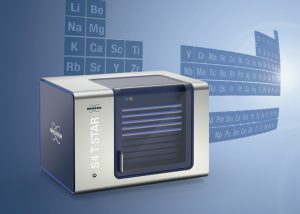Integrating High-Precision Instruments into Environmental Research

Accurate data collection is fundamental to environmental research. BlueScientific distributes specialized instruments that enhance the accuracy and reliability of data for studies focused on environmental changes. Precision is critical in tracking subtle changes in climate or detecting low concentrations of pollutants, which can have significant ecological impacts. The equipment we distribute enables researchers to observe these changes accurately, leading to more effective interventions and a deeper understanding of environmental dynamics.
The Need for Precision in Environmental Research
Environmental research underpins policies for climate change, pollution control, and ecosystem management. Precise data ensures that the conclusions drawn and actions taken are based on reliable information, preventing costly missteps and ineffective solutions. More accurate data can lead to a better understanding of environmental conditions, potentially leading to inadequate policy responses. For example, precise temperature measurements are critical for accurately modelling climate change, and minor errors can drastically alter predictions.
Challenges in Environmental Data Acquisition
Collecting high-quality environmental data is challenging due to unpredictable field conditions, limitations of traditional equipment, and the complexity of natural systems. These challenges often compromise data quality, emphasizing the need for better technological tools. Traditional instruments might lack the sensitivity required to detect trace elements or subtle ecological changes, which are crucial for assessing pollution levels or the health of an ecosystem. Introducing advanced technological solutions can significantly enhance the robustness and accuracy of environmental data.
BlueScientific’s High-Precision Solutions
- Bruker Micro-CT Scanners: These scanners provide detailed images of environmental samples, such as soils, plant tissues, and rock cores. For example, a rock core sample can reveal events spanning thousands of years, including volcanic eruptions. Bruker’s X-ray micro-CT instruments allow researchers to explore the internal structure of samples in 3D, offering insights into material properties and spatial relationships that are impossible with traditional microscopy.
- Bruker Elio and Crono Micro-XRF Systems: These instruments are essential for on-site analysis of environmental samples. They allow researchers to detect and quantify pollutants in soils and waters efficiently and non-destructively. Bruker’s Elio and Crono systems are precious for field studies where transporting samples to laboratories is impractical, ensuring that data collection is precise and immediate.
- CAMECA Atom Probe Tomography (APT): APT is invaluable for research requiring atomic-level precision. It offers precise compositional analysis, which is ideal for studying minute particles. This instrument can analyze materials’ chemical identity and structure at the atomic scale, providing unprecedented insights into environmental contaminants.
- Raman Spectroscopy and Atomic Force Microscopy (AFM): Raman spectroscopy is applied in atmospheric particle analysis, significantly contributing to air quality studies. For example, Raman applications in identifying microplastics can be found here. AFM studies surface characteristics and properties at the nanoscale, offering valuable insights into environmental samples.
Case Studies and Applications
Examples include:
- Micro-CT aids in visualizing soil structure changes and root development, which is critical for studies on plant health and soil erosion. This technology has been instrumental in discovering how different species affect and are affected by their soil environments.
- Micro-XRF is utilized in real-time pollution assessment in river systems, providing data that helps guide remediation efforts effectively. This technology has proven essential in ongoing monitoring projects, tracking how pollution disperses and changes over time in aquatic environments.
- APT is applied in atmospheric particle analysis and contributes significantly to air quality studies. Researchers have used this technology to trace urban air pollution sources and understand its impact on public health and the environment.
Integrating Advanced Instruments into Research Frameworks
Introducing these sophisticated instruments into existing research setups requires some adaptation. At BlueScientific, we support this integration by offering comprehensive training and ongoing technical support, ensuring researchers can fully leverage these advanced tools. This support extends to on-site training sessions and detailed documentation, enabling a smooth transition that maximizes the potential of these technologies in various research scenarios.
Conclusion
Precision in environmental research is crucial for developing effective and sustainable solutions to environmental problems. BlueScientific equips researchers with the tools necessary for precise measurements, supporting the advancement of scientific knowledge and policy development.
For more information on our products and services or to schedule a consultation, please call us at +44 (0)1223 422 269 or email info@blue-scientific.com.

